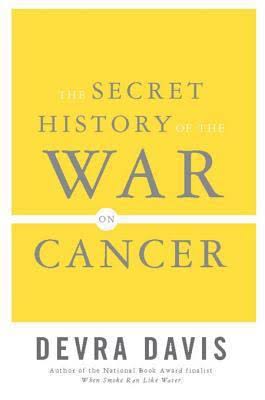Much has bee n written about how we address cancer. While an aggressive approach as recommended by Oncologists should always be part of the discussion, other ways to handle cancer do not get much publicity, especially its provenance and prevention.
n written about how we address cancer. While an aggressive approach as recommended by Oncologists should always be part of the discussion, other ways to handle cancer do not get much publicity, especially its provenance and prevention.
A landmark article “Apoptosis by dietary factors” (J. Carcinogenesis 2007;28:233) showed that 2/3 of cancers could be prevented with good nutrition alone. Unfortunately, it never got any attention from the media. Instead, we are constantly bombarded by advertisement to get our mammograms done, and our PSA checked despite significant controversy as to their value. The Swiss stopped using mammograms (“Abolishing Mammography Screening Programs? A View from the Swiss Medical Board,” N Engl J Med 2014; 370:1965-1967) and articles questioning the use of PSA test are a dime a dozen.
Why is this so? You will not believe me if I told you. So, you must study this thorny issue yourself. You will not get a straight answer from the media. Start with the raw data below, and then the books highlighted. You owe to yourself and to your loved ones.
XXXXXXXXXXXXXXXXXXX
About 20% to 40% of cancer cases and about half of all cancer deaths can potentially be avoided by making modifications in lifestyle, according to new findings. if people did not smoke, drank only a little alcohol, maintained a healthy weight (ie, m aintained a body mass index [BMI] of 18.5 to 27.5), and exercised regularly (weekly aerobic physical activity of at least 75 vigorous-intensity or 150 moderate-intensity minutes). The impact may even be larger — about 40% to 70% of cancer cases ― for the general white population, who for the most part follow worse lifestyle patterns than the study cohort, the investigators note. The study was published online May 19 in JAMA Oncology.
aintained a body mass index [BMI] of 18.5 to 27.5), and exercised regularly (weekly aerobic physical activity of at least 75 vigorous-intensity or 150 moderate-intensity minutes). The impact may even be larger — about 40% to 70% of cancer cases ― for the general white population, who for the most part follow worse lifestyle patterns than the study cohort, the investigators note. The study was published online May 19 in JAMA Oncology.
Healthy lifestyle patterns could help prevent more than half of cancer deaths, research estimates
The Washington Post (5/19, Johnson) “Wonkblog” reports research published in JAMA Oncology suggests that “by applying insights we’ve had for decades – no smoking, drinking in moderation, maintaining a healthy body weight and exercising – more than half of cancer deaths could be prevented and new cases of cancer could drop by 40 percent to 60 percent.”
The NBC News (5/19, Fox) website reports that investigators came to this conclusion after looking at “data from long-term studies of about 140,000 health professionals who update researchers on their health every two years.”
Exercise linked to reduced risk of several cancers
ABC World News Tonight (5/16, story 11, 0:25, Muir) reported, “The National Cancer Institute confirms that moderate exercise, all the way up to intense exercise, lowers the risk of” cancer “in many forms.”
The Los Angeles Times (5/16, Healy) reports that the research, published in JAMA Internal Medicine, suggests “exercise is a powerful cancer-preventive.” Investigators found that “physical activity worked to drive down rates of a broad array of cancers even among smokers, former smokers, and the overweight and obese.”
US News & World Report (5/16, Esposito) reports that investigators “analyzed data from participants in 12 US and European study groups who self-reported their physical activity between 1987 and 2004.” The researchers “looked at the incidence of 26 kinds of cancer occurring in the study follow-up period, which lasted 11 years on average.” The data indicated that “overall, a higher level of activity was tied to a 7 percent lower risk of developing any type of cancer.”
TIME (5/16, Park) reports that “the reduced risk was especially striking for 13 types of cancers.” Individuals “who were more active had on average a 20% lower risk of cancers of the esophagus, lung, kidney, stomach, endometrium and others compared with people who were less active.” Meanwhile, “the reduction was slightly lower for colon, bladder, and breast cancers.”
Eating three servings of fruit in adolescence may reduce risk of breast cancer, study suggests
TIME (5/11, Park) reports new research published in the British Medical Journal analyzed how diet during adolescence may affect cancer risk. Researchers found that nearly half of the 90,000 women who participated in a Nurses’ Health Study answered questions regarding their diets while they were teens. From this information, the researchers found that “those who reported eating nearly three servings of fruit a day on average had a 25% lower risk of developing breast cancer than those who ate half a serving of fruit.”
Conversely, HealthDay (5/11, Mozes) reports that “women who drink more alcohol over time might increase their breast cancer risk.” According to the article, “food and drink consumption was also tallied once every four years from 1991 to 2013, at which point the women were asked to recall their diets over the prior year.” Over the two decades of the study, more than “3,200 women developed invasive breast cancer.” HealthDay notes that “adolescent dietary information was available for about 1,350 of those women.”
Preventable Incidence and Mortality of Carcinoma Associated With Lifestyle Factors Among White Adults in the United States
AMA Oncol. Published online May 19, 2016. Good lifestyle 41% incidence of total carcinoma; and 63% for bad lifestyle


